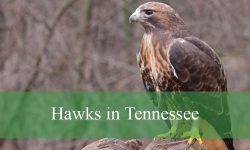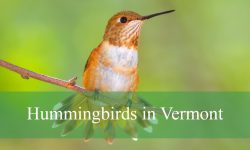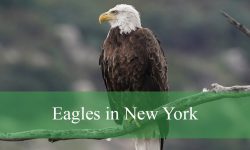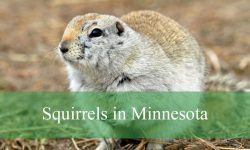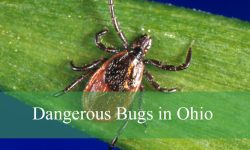River otters have long captured the imagination of nature lovers across the United States, but few places have a story quite as intriguing as Pennsylvania. This northeastern state, known for its winding rivers, dense forests, and abundant wildlife, is also home to one of the most fascinating conservation stories involving a species that was once on the brink of disappearing entirely from the region. While river otters are admired for their playful demeanor and sleek aquatic agility, the most surprising thing about them in Pennsylvania goes far beyond their cute appearance—it lies in their incredible return from near extinction.
The journey of the river otter (Lontra canadensis) in Pennsylvania is one marked by dramatic decline, dedicated restoration, and a now-thriving presence that few could have predicted just decades ago. This article explores not only the biology and behavior of these elusive mammals but also the startling facts behind their reintroduction and the unexpected roles they play in the state’s aquatic ecosystems.
A Closer Look at River Otters and Their Natural Behavior
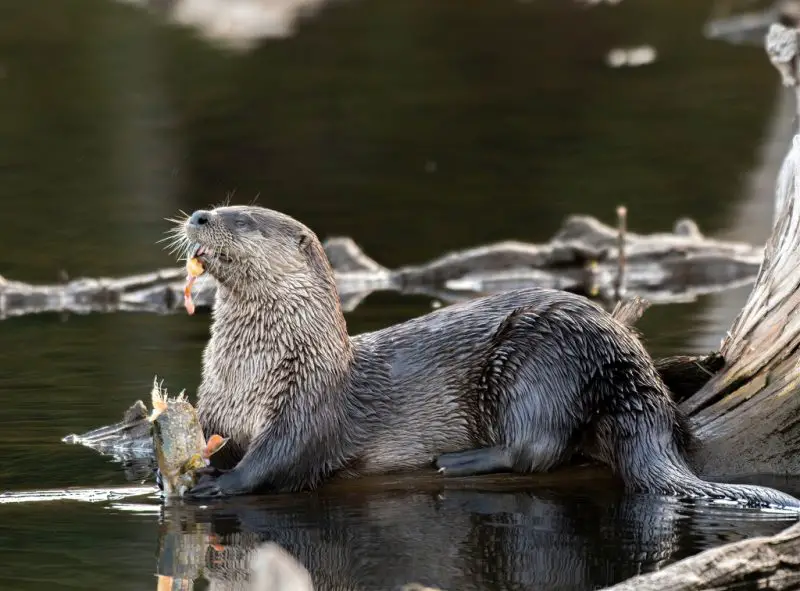
River otters are members of the weasel family, Mustelidae, and are closely related to animals like mink, martens, and badgers. They are characterized by long, streamlined bodies, thick brown fur, webbed feet, and strong tails used for swimming. Highly adapted to aquatic life, they can hold their breath underwater for up to eight minutes and are capable of closing their ears and nostrils to keep water out.
These animals are primarily active during the night and twilight hours, although in areas with little human disturbance, they can also be seen during the day. They are both predators and indicators of a healthy environment. Their diet is composed mostly of fish, but they also eat amphibians, crustaceans, and occasionally small mammals or birds. River otters are highly social, often seen in family groups, especially during the rearing season when the female raises her pups.
One of the otter’s most fascinating behavioral traits is their playfulness. They have been observed sliding down muddy or snowy banks, engaging in mock wrestling, and performing acrobatic dives. While these behaviors may look like pure entertainment, they play an essential role in strengthening social bonds and developing hunting skills.
A Disappearing Act: The Historical Decline in Pennsylvania
By the early 20th century, river otters had virtually vanished from Pennsylvania. This alarming decline was caused by a combination of factors, including habitat destruction, pollution of waterways, and unregulated trapping for their highly prized pelts. As industrial development surged throughout the state, the once pristine rivers and streams became increasingly toxic to aquatic life, making survival nearly impossible for sensitive species like otters.
The eastern United States, including Pennsylvania, saw a wave of environmental degradation that went largely unaddressed until the rise of the conservation movement in the mid-20th century. Logging, mining, and agriculture heavily altered riparian habitats, while the booming fur trade put immense pressure on otter populations. By 1952, river otters were considered extirpated (locally extinct) from most regions of the state, with only a few isolated individuals possibly remaining in remote northern waters.
This loss did not go unnoticed by biologists and conservationists. The disappearance of the river otter served as a red flag, indicating severe ecological problems in the state’s aquatic systems. However, few would have predicted that these creatures would one day make a triumphant comeback—and that comeback would become the most surprising thing about their presence in Pennsylvania today.
An Unlikely Return: The Reintroduction Program That Changed Everything
The river otter’s resurgence in Pennsylvania is largely the result of a highly coordinated reintroduction effort initiated in the 1980s by the Pennsylvania Game Commission. At the time, reintroduction programs were relatively novel and posed many challenges, including public perception, funding, and ecological uncertainty. Nevertheless, the commission moved forward, recognizing the importance of restoring a species that was once an integral part of the state’s natural heritage.
From 1982 to 2004, over 150 river otters were captured in other states such as Louisiana, New York, and New Hampshire, and released in various suitable habitats throughout Pennsylvania. Each release was carefully planned, targeting areas with clean water, abundant prey, and minimal human disturbance. Scientists used radio telemetry and tracking collars to monitor the animals’ movements, ensuring they adapted to their new environments.
What followed exceeded even the most optimistic expectations. Not only did the released otters survive, but they thrived. They began to breed, expand their territories, and recolonize rivers and streams throughout the state. Their populations have since become self-sustaining, and they are now regularly observed in waterways where they had not been seen in nearly a century. Today, river otters inhabit every major watershed in Pennsylvania, from the Delaware River in the east to the Ohio River in the west.
Ecological Impact and the Hidden Benefits of Otter Recovery
The most surprising thing about river otters in Pennsylvania may not be their comeback itself, but rather the broad ecological effects they’ve had on aquatic ecosystems. As apex predators, river otters play a vital role in maintaining balanced food webs. By preying on fish, amphibians, and invertebrates, they help regulate populations and prevent the overdominance of any one species.
In addition to their role as predators, otters are considered bioindicators—species that reflect the health of the environment in which they live. Their presence suggests clean water, healthy fish populations, and robust wetland ecosystems. The successful return of river otters has inspired further habitat conservation efforts across Pennsylvania, reinforcing the idea that species restoration and ecosystem restoration go hand in hand.
There is also a surprising socio-economic element to their recovery. Otters have become a flagship species for watershed conservation, drawing attention and funding to environmental protection efforts. Wildlife watchers, photographers, and eco-tourists are increasingly interested in spotting river otters, which has led to economic benefits for local communities, especially in rural areas with outdoor tourism opportunities.
Modern-Day Sightings and Public Fascination
Today, Pennsylvanians can once again witness river otters in the wild—an experience that would have been nearly impossible just a few decades ago. Sightings are most common in forested riparian areas, state parks, and wildlife refuges where human presence is minimal and water quality is high. Otters are shy creatures and tend to avoid heavily urbanized or disturbed areas, but patient observers can sometimes catch a glimpse during dawn or dusk, especially during the cooler months when ice and snow make their tracks and slides more visible.
The otter’s reappearance has sparked a wave of public interest and educational initiatives. Schools, nature centers, and conservation groups now include river otters in their environmental curricula, emphasizing the species’ value as both an ecological asset and a conservation success story. Their appeal is not only scientific but also emotional—people are naturally drawn to their expressive faces, agile movements, and family-oriented behavior.
One of the most compelling aspects of the river otter’s presence today is the joy and hope it brings to those who care about the environment. In a world where news about species extinction and habitat loss often dominates headlines, the story of the river otter provides a rare example of positive change, resilience, and the power of targeted conservation.
Challenges That Remain in Otter Conservation
Despite their recovery, river otters in Pennsylvania still face certain challenges. Habitat fragmentation remains a concern, particularly in areas undergoing rapid urban development. As roads and construction projects divide once-continuous habitats, the ability of otters to travel between waterways becomes limited, potentially reducing genetic diversity and increasing the risk of localized extinctions.
Pollution is another ongoing threat. Although water quality in Pennsylvania has improved significantly since the 1970s thanks to the Clean Water Act and local conservation efforts, certain rivers and streams are still affected by agricultural runoff, industrial waste, and stormwater. Because otters rely heavily on fish as a food source, any contamination of the aquatic food chain can impact their health and reproductive success.
Climate change also presents new uncertainties. As weather patterns shift, the availability and distribution of prey species may change, and flood events or droughts could alter the structure of riparian habitats. Conservationists continue to monitor these dynamics to ensure that the conditions supporting otter populations remain stable in the long term.
Why the River Otter’s Return Is So Surprising
The true surprise surrounding river otters in Pennsylvania lies in the magnitude and speed of their recovery, as well as the unexpected ripple effects on ecosystems and public awareness. What began as a small-scale reintroduction experiment evolved into one of the most successful wildlife restoration efforts in the state’s history. Few expected that a species so sensitive to environmental changes could re-establish itself so thoroughly in a modern landscape altered by centuries of human activity.
The fact that river otters now serve as ambassadors for clean water and biodiversity is equally striking. They remind people that the restoration of a single species can catalyze broader environmental stewardship. Their survival story offers hope that with the right conditions—clean water, protected habitat, and public support—even the most vulnerable animals can rebound.
In a time when many species are experiencing dramatic population declines, the river otter stands as a symbol of resilience. Its story is a compelling narrative not just about biology or conservation, but about the deep interconnection between people, wildlife, and the land they share.
The Future of River Otters in Pennsylvania
Looking forward, the future of river otters in Pennsylvania appears promising but requires continued vigilance. Conservation organizations, government agencies, and local communities must work together to maintain clean waterways, protect natural habitats, and educate the public on the importance of aquatic ecosystems.
Research remains essential. Ongoing studies into otter movement, population dynamics, and ecological impacts will help inform future decisions, especially as the environment continues to change. Technological advancements such as GPS collars and camera traps offer new ways to study these elusive mammals without disturbing their natural behavior.
Public involvement is also key. Citizen science programs that track otter sightings, record environmental conditions, and support river cleanups can amplify conservation efforts and foster a sense of shared responsibility. As more people experience the joy of encountering river otters in the wild, the drive to protect them will only grow stronger.
FAQs about River Otters in Pennsylvania
What is the most surprising thing about river otters in Pennsylvania?
The most surprising thing is their successful reintroduction after near extinction and how they’ve rebounded to inhabit nearly all major watersheds across the state.
Are river otters native to Pennsylvania?
Yes, river otters are native to Pennsylvania but were extirpated from most regions by the mid-1900s due to trapping and pollution before being reintroduced in the 1980s.
Where can I see river otters in Pennsylvania?
They are most often found in clean, remote rivers and wetlands such as those in the Allegheny National Forest, the Susquehanna River Basin, and state game lands.
Do river otters pose any threat to fish populations?
While they eat fish, otters are natural parts of aquatic food webs and do not typically cause long-term harm to fish populations in healthy ecosystems.
How can I help protect river otters in Pennsylvania?
You can support clean water initiatives, avoid using pesticides near waterways, participate in stream cleanups, and report any otter sightings to wildlife agencies.

